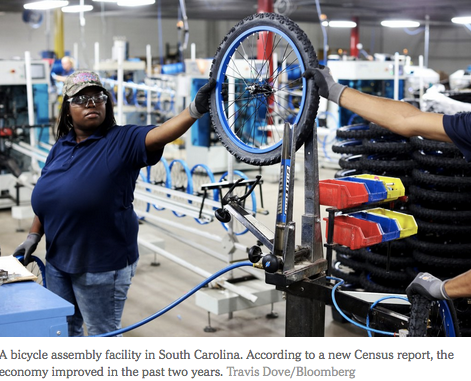The Census report, released on Tuesday, showed median income, adjusted for inflation, grew by 3.2 percent from 2015 to 2106, to $59,039, as employers added jobs and hours and even, in some cases, gave raises. At the same time, the poverty rate decreased by 0.8 percentage points, or 2.5 million people, to 12.7 percent. Both measures are now at or near their prerecession levels in 2007, a hard-fought recovery.
On health care, the data show that the ranks of the uninsured fell last year by 900,000 people, to an all-time low of 8.8 percent of the population. The decline is a result of the Affordable Care Act, or Obamacare. The 32 states and District of Columbia that participate in the A.C.A.’s expansion of Medicaid for low-income families had larger declines in their uninsured populations than states that do not participate. Massachusetts, for example, a pioneer in broad coverage, has the lowest uninsured rate in the nation, 2.5 percent, while Texas, which rejected Medicaid expansion, has the highest, 16.6 percent.
The data also show the success of federal safety-net programs. If not for tax credits for low-income workers, an additional 8.2 million people would have been classified as poor last year. Similarly, food stamps and low-income housing aid lifted 3.6 million and 3.1 million people, respectively, out of poverty last year.
For all the improvement, however, broad prosperity remains elusive. For income gains to meaningfully raise living standards, they would have had to exceed the peak from before the recession, not merely met it. One in eight Americans, 40.6 million people, are still poor. Some 28.1 million are still without health coverage.
And yet, Republican policy makers seem determined to undo the progress that has been made.




